Ruth B. McDowell
2014 Inductee
by Ann Palkovich Shaw
Ruth McDowell first became intrigued with quilts in the early 1970s, a time in America of renewed interest in quilting. Drawn to “making things” since childhood, the quilt world in the 1970s offered Ruth a new opportunity to explore colors, textures and design, interpreted through the traditions of piecing and appliqué. After she graduated from the Massachusetts Institute of Technology in 1967 with a B.S. in Art and Design, her training in color, proportion, value and line soon found a new outlet. After a brief career as a technical illustrator, Ruth began teaching herself machine piecing.
In 1972, Ruth became captivated by the original block designs of Ruby McKim—artist, quilt designer, entrepreneur and 2002 Inductee into The Quilters Hall of Fame. Ruth later wrote in her book Art and Inspirations, “I was fascinated with the designs I found in Ruby McKim’s 1931 book, 101 Patchwork Patterns. Her original blocks based on poppy, iris, rose and trumpet vine were graphically interesting, botanically recognizable, and straightforward to piece with traditional methods.... The trumpet vine I found especially fascinating.”
Inspired, Ruth made a pair of twin-sized quilts using pieced flower blocks, then hand appliquéd the stems and leaves. “My previous experience with a sewing machine allowed me to adapt block patterns to machine piecing these first quilts... a method I’ve preferred ever since.”
Having discovered the burgeoning community of quilters in the mid 1970s, Ruth joined The Quilters Connection guild in Arlington, Massachusetts. From its inception, The Quilters Connection’s annual quilt show was open to all members. With no jurying of entries or prizes, members were encouraged to share their quilts in each show so everyone in the community could learn from each other.
It was here that Ruth first encountered the quilts of Nancy Halpern, Rhoda Cohen and Michael James, the 1993 Inductee into The Quilters Hall of Fame. Soon, Ruth joined Nancy, Rhoda and Sylvia Einstein in a small group, meeting monthly to share ideas, information and fabric. “Though we have quite disparate styles and methods of working, seeing my work through their eyes was invaluable to me as I developed my personal style.”
Ruth’s earliest quilts explored traditional repeated blocks, creating intricate patterns with solid color cottons. By 1980 she was designing her own block patterns. “Nasturtium was a twelve inch block I designed in the style of Ruby McKim. Not finding the right shade of green for the leaves and blue for the background at the fabric store, I quickly learned to be flexible in my color schemes. In every quilt I’ve made since then, color choices come from the fabrics I have at hand.”
A series of 40-inch designs based on herbs soon followed. Bee Balm with its bright red petals and dense, complex flower form proved an interesting quandary. “The challenge with Bee Balm was to find a way to capture the essence of the flower and still create a pieceable design. By eliminating most of the florets yet retaining their spiky form as well as the overall flower shape, I learned one could create a recognizable abstraction of the flower.” Bee Balm and Borage II were invited to hang in the Quilt National '81 exhibit.
After an encounter with a mathematician at a quilt exhibition, Ruth became fascinated with the role of symmetry in repeated block quilts. This led to her book, Symmetry: A Design System for Quiltmakers, where she explored the seventeen varieties of two dimensional plane symmetries. Her innovative use of handprints to explain mirror images provided a quick visual reference to the kinds of block arrangements one could use in quilts. “I was able to use this symmetry system to introduce asymmetrical blocks to quilters and challenge them to think about quilt design in a new way. The extraordinary variety of patterns encouraged students in my classes to explore design possibilities for themselves.”
Throughout her career, Ruth has worked in a variety of formats, concentrating on repeated block patterns and whole block pictorial designs. Irregular repeated blocks, Ruth found, are amenable to flower forms. “Irregular blocks that tessellate, or fit together, create visually interesting quilts. The petals and leaves of a flower may be contained in a single block, or a portion of the design may appear in the adjacent block. In each case, the block integrates both flower and background into the overall design. Without the need to frame each block with traditional sashing, a more dynamic look to a quilt is possible.”
At the same time that Ruth was creating innovative ways to design asymmetrical repeated blocks, she began to create pictorial quilt designs. Inspired by the natural world around her, Ruth’s pictorial quilts usually begin as freehand drawings. “I pay great attention to the overall seaming in the design. The placement of seam lines not only contributes to the look of a quilt, but makes the design sew-able.”
“My pieces are unapologetically quilts, first and foremost,” she says. “My focus on traditional piecing methods creates an explicit connection to the quilts and quiltmakers of the past.” Ruth’s quilts transform that tradition, and are recognized for the innovative ways she incorporates unusual fabric choices into dynamic designs. A large collection of primarily cotton fabrics from many eras and intended uses—plaids, large, medium and small prints, multi-colored patterns, batiks, geometrics, and a few hand-dyed fabrics—provide the palette she draws upon.
“I have been fascinated by the possibilities, as well as the limits, that traditional piecing methods present when creating visually dynamic designs.” “I enjoy the challenge of abstracting a design to its essential form. With rare exceptions, I’ve never felt the need to embellish or paint my quilts.” Ruth’s work reflects her uncanny ability to refine designs: “I choose not to add as much detail as possible; sometimes those elements cloud a design. The true challenge is to take away as much detail as possible and still convey the image or look you intend.”
The thoughtful placement of seams to enhance a design and the innovative use of patterned fabric are the hallmarks of every Ruth McDowell quilt. In her pictorial quilts, seam lines create visual connections among the elements of the design, while her choice of fabrics creates movement, depth and visual interest. Ruth McDowell’s quilts are unique in the quilt world and are a testament to her artist’s eye and her quilter’s skill. Extremely prolific, Ruth has created well over 500 quilts in her career.
Teaching is another important creative outlet for Ruth. She has inspired thousands of students throughout the world with her lectures and workshops, encouraging each quilter to think creatively while mastering the design techniques. Of the ten books that Ruth has authored, eight feature her design approach, culminating in her two master books, Ruth McDowell’s Design Workshop and Ruth McDowell’s Piecing Workshop. Two of her books, Art and Inspirations: Ruth B McDowell and Fabric Journey: An Inside Look at the Quilts of Ruth B McDowell, present her work and career as a quilter.
In 2005, Ruth created the Elf quilt in collaboration with a group of Danish quilters to honor the 200th birthday of Hans Christian Anderson, to illustrate his “Elf Mound” story. “It was an amazing week,” says Ruth, as these students and Ruth worked together on her design. The Elf Quilt is in the permanent collection of the International Quilt Study Center and Museum.
Ruth McDowell’s work has received national and international acclaim. Solo exhibits of her work include The Gallery on the Green, Lexington, MA; Hearts and Hands Quilt Festival, Tokyo, Japan; the National Quilt Museum, Paducah, KY; San Jose Museum of Quilts and Textiles; East Bay Heritage Quilters, Oakland, CA; and New England Quilt Museum. Among the invitational art quilt exhibitions that featured Ruth’s quilts are: Los Angeles Art Gallery; Museum of Art at Penn State University; Tokyo International Great Quilt Festival, Japan; and Castle Gallery, Lake Constance, Germany. Her quilt, Cod, appears in the “What is Art?” episode of the video, “Why Quilts Matter.”
Ruth was recognized as an “All American Quilter” by the American Quilter's Society in 2004. Two of her quilts, The Twelve Dancing Princesses and Yellow Maples, were selected for The 100 Best American Quilts of the Twentieth Century exhibit and book. Ruth’s quilts are also included in the permanent collections of The National Quilt Museum; Brigham and Women’s Hospital, Boston, MA; JV Fletcher Library, Westford, MA; New England Quilt Museum, Lowell, MA; International Quilt Study Center and Museum, Lincoln, NE; the Thomas Contemporary Art Quilt Collection; the John M. Walsh Collection of Contemporary Art Quilts; the Shaw Contemporary Art Quilt Collection and many other corporate and private collectors. She has received numerous awards and recognition, including the Lifetime Achievement Award of the Studio 28 Contemporary Art Quilt Group.
Ruth B. McDowell’s distinctive quilts are an exceptional contribution to contemporary art and to the quilt world. Her skills as an artist and a quiltmaker are echoed in the lives she has touched as an extraordinary teacher. Her induction into The Quilters Hall of Fame in 2014 honored her innovative body of work as a quiltmaker and her passion as a teacher. Ruth’s extraordinary career has touched the lives of many people and continues to inspire generations of quilters.
Photo courtesy John Polak Photography
"My quilts happen through a process that is certainly non-verbal... a conjunction of things seen/ heard/ felt with fabrics/ patterns/ images starting a conversation that is interpreted as a quilt."
Ruth B. McDowell
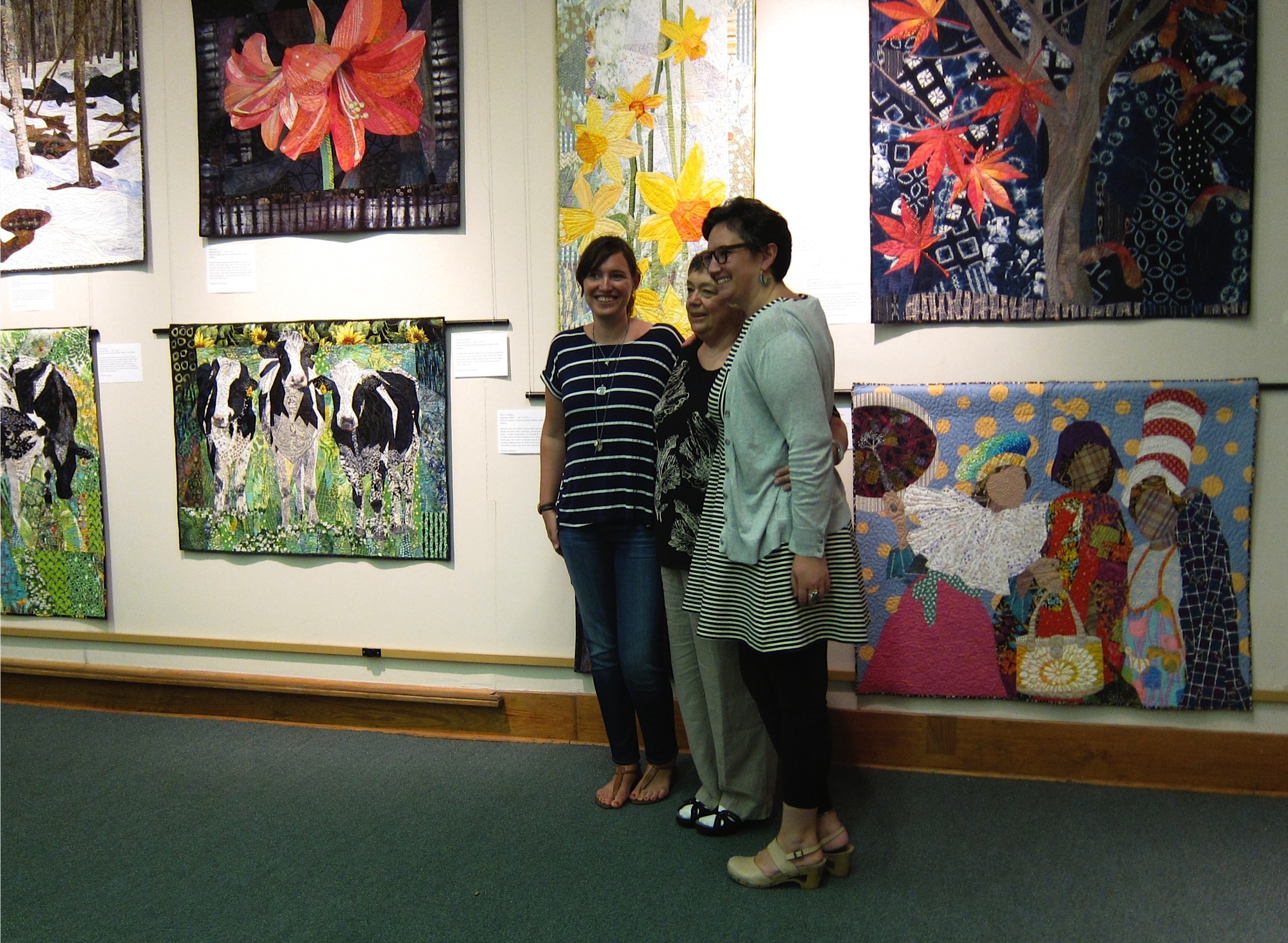
Ruth McDowell with her daughters, Leah Lofgren (R) and Emily McDowell (L), at the Honoree exhibit of Ruth's quilts during Celebration 2014 in Marion, Indiana.
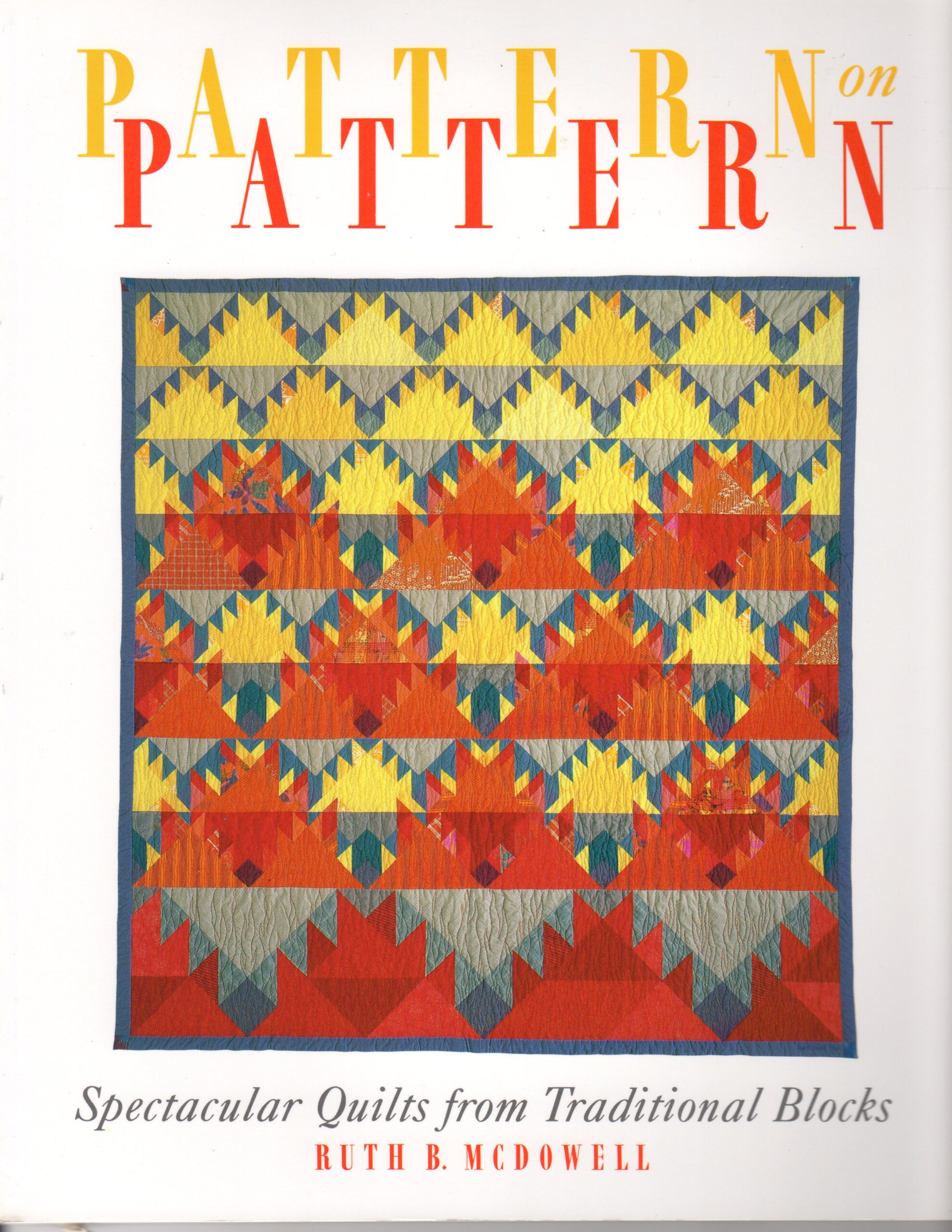
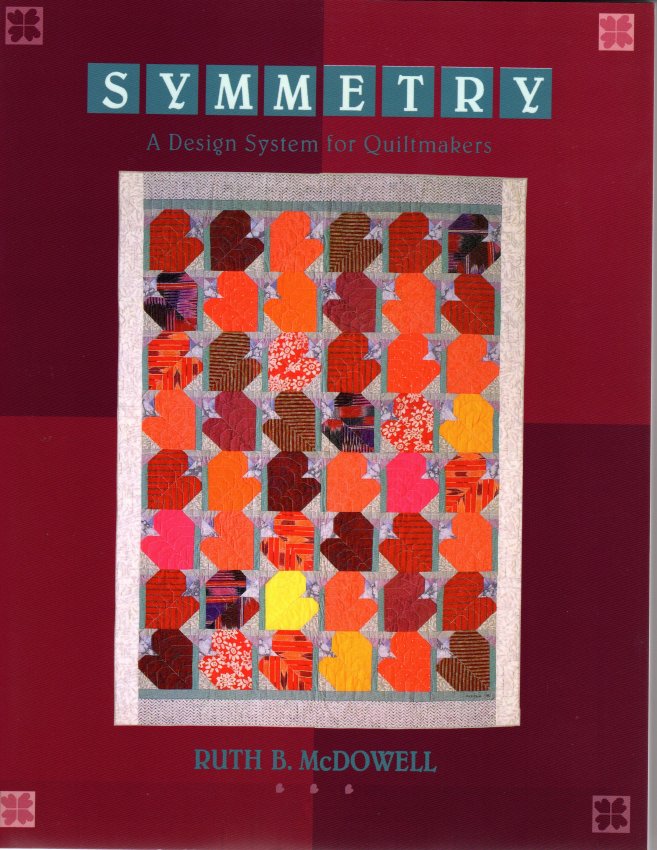
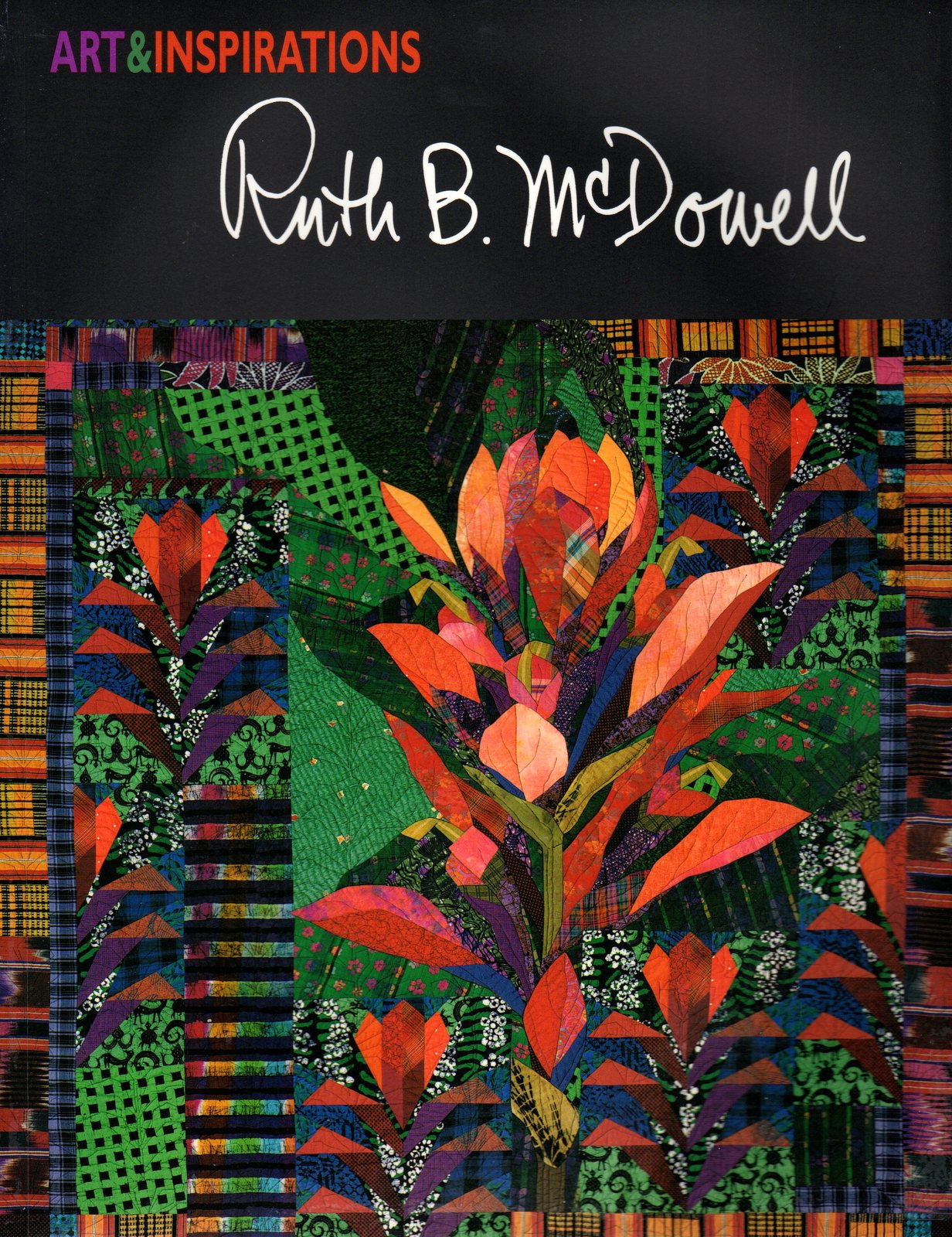
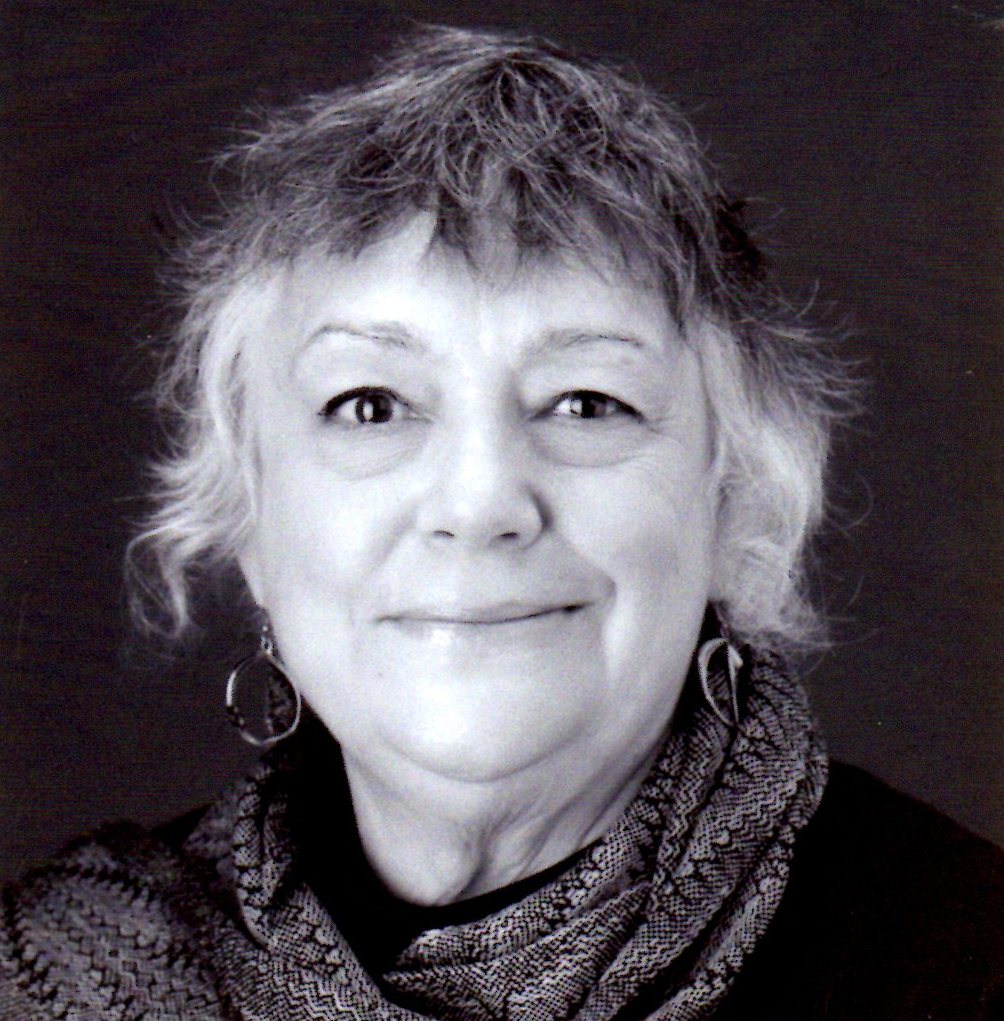
Selected Readings
Austin, Mary Leman, editor. The Twentieth Century's Best American Quilts: Celebrating 100 Years of the Art of Quiltmaking. Golden, CO: Primedia Special Interest Publications, 1999.
Bennett, Kathleen. "Thread Witch: The Magic Artistry of Ruth B. McDowell." American Quilter, vol. XXIV, no. 6 (Nov. 2008), pp. 34-37.
Ichikawa, Naomi. "Ruth McDowell." Patchwork Quilt tsushin. No. 153 (Dec. 2009), pp. 59-61.
Khalsa, Gigi. "Meetin' Place: A Lifelong Passion for Patchwork, Ruth McDowell." Quilter's Newsletter Magazine, vol. 45, no. 2, pp. 24-27.
McDowell, Ruth B. Pattern on Pattern: Spectacular Quilts from Traditional Blocks. San Francisco: Quilt Digest Press, 1991.
McDowell, Ruth B. Symmetry: A Design System for Quiltmakers. Lafayette, CA: C&T Publishing, 1994.
McDowell, Ruth B. Art and Inspirations: Ruth B. McDowell. Lafayette, CA: C&T Publishing, 1996.
McDowell, Ruth B. Piecing: Expanding the Basics. Lafayette, CA: C&T Publishing, 1998.
McDowell, Ruth B. When Quilters Gather: 20 Patterns of Piecers at Play. C&T Publishing, 2003.
McDowell, Ruth B. Fabric Journey: An Inside Look at the Quilts of Ruth B. McDowell. C&T Publishing, 2005.
McDowell, Ruth B. Ruth B. McDowell's Design Workshop: Turn Your Inspiration into an Artfully Pieced Quilt. C&T Publishing, 2007.
McDowell, Ruth B. Ruth B. McDowell's Piecing Workshop. Lafayette, CA: C&T Publishing, 2007.
Neu, Julie Brown. "Ruth B. McDowell: A Qulter's Career." Quilter's Newsletter Magazine, vol. 42, no. 4, pp. 42-45.

